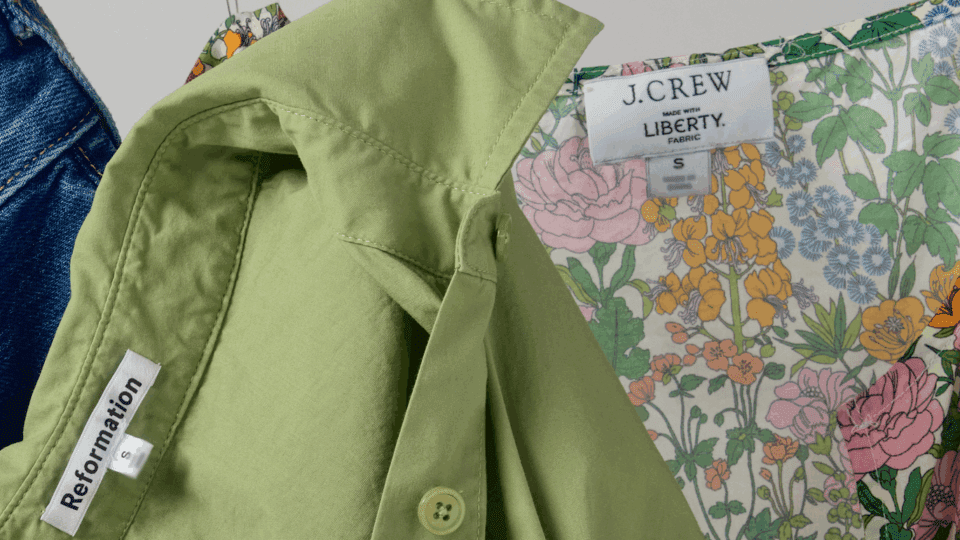Online resale platform ThredUp has made a bold move in its effort to promote the development of circular retail more broadly. The company is making its resale-as-a-service (RaaS) technology free and open source, meaning that the underlying code powering its branded resale shops is now available for any company to access and use at no cost.
The company also announced a host of other big plans for the rest of 2025, including the debut of a new peer-to-peer marketplace scheduled to launch by the end of this year, plans for new solutions to help retailers with returns and adding support for menswear (the company has previously focused only on women’s and kids).
ThredUp currently operates as a managed marketplace, with customers and brands sending in products that are assessed, stored, listed and eventually sold by ThredUp. The peer-to-peer offering will allow consumers to sell items directly to other consumers. Once launched, peer-to-peer sales also will be available for brands to integrate into their branded resale shops if they are built on ThredUp’s now free RaaS technology. It’s through the new peer-to-peer offering that ThredUp will now support the sales of menswear items for the first time.
Making Resale More Accessible and Cost-Effective for Everyone
The biggest news by far, though, is ThredUp making RaaS free, a move that was prompted by the observation that “the market is evolving in ways we think are counterproductive to building scalable circularity business models,” said ThredUp CEO James Reinhart on the company’s Q1 earnings call.
Specifically, Reinhart called out the fact that much of what is being sold in online resale today is overstock or returned products rather than true secondhand goods. “This is largely because brands have been unable to scale their take-back and circularity programs and are left with no choice but to fill their shops with other branded product. In reality they are paying software, management and consulting fees for programs that are doing very little to build native circularity into their strategies,” explained Reinhart.
ThredUp touted the move as an opportunity for retailers amid the current economic uncertainty, not only enabling them to participate in an area of retail that is growing rapidly, but also to bypass tariffs altogether by unlocking domestic supply streams and building sustainability into their core business.
“We think branded resale is being held back by the lack of sophisticated technology and operations, so we’ve decided to begin open sourcing our front-end technology and back-end logistics chain to encourage brands to make a bigger impact,” he added. “We believe value for this ecosystem is created in the operations and technology layer [and the ability to] ingest secondhand items at scale and make them available for resale as efficiently as possible. This has never been more relevant than it is today as brands navigate global supply chain disruptions.”
The Creation of a ‘Universal Recommerce Layer’
ThredUp’s RaaS technology will now form the foundation of what the company hopes will become a “universal recommerce layer” that empowers more brands to build impactful, cost-effective circular resale programs — akin to what Amazon Web Services has done for cloud services or Shopify has done for small business.
Companies currently using ThredUp’s RaaS program to power their resale offerings — which include American Eagle, Fabletics, J.Crew, Gap, Vera Bradley and many others — will no longer pay branded resale fees and also will pay lower usage fees for ThredUp’s Clean Out program, which allows brands to send in secondhand goods from their customers to be processed and sold on ThredUp.
Brands not already using RaaS can now create their own branded resale shop for free with an integration into the Clean Out program, for which they will pay the now lower usage-based fee. Brands will earn a revenue share on items sold from ThredUp’s existing inventory within their branded shop and retain 100% of the revenue generated from secondhand items they add to their shop directly.
Other services in the RaaS 2.0 offering include:
- Access to ThredUp’s network of cleaning and repair partners to facilitate the integration of affordable cleaning and repair services;
- Marketing support in the form of customized advertisements on brand product pages on the ThredUp platform at no additional cost, along with social media and marketing collaborations to highlight brands’ resale leadership;
- Access to ThredUp’s network of vetted aftermarket partners to ensure environmentally conscious processing for unsellable garments, along with data insights to inform the development of their resale offering;
- Integration into ThredUp’s built-in AI search and discovery tools for an optimized customer experience; and
- Solutions for overstock and returns that will allow brands to increase revenue by moving stagnant inventory through ThredUp’s marketplace and their own resale shops.
ThredUp Sees Revenue and Buyers Increase in Q1
These announcements come as ThredUp reported banner results in Q1, with quarterly revenue hitting a record $71.3 million, a 10% increase year-over-year. Active buyers also increased in the quarter by 6% YoY to 1.37 million people, and the company marked its best quarter ever for new buyer acquisition. As a result, ThredUp has increased its full-year outlook, a move not many companies are making in the current environment.















